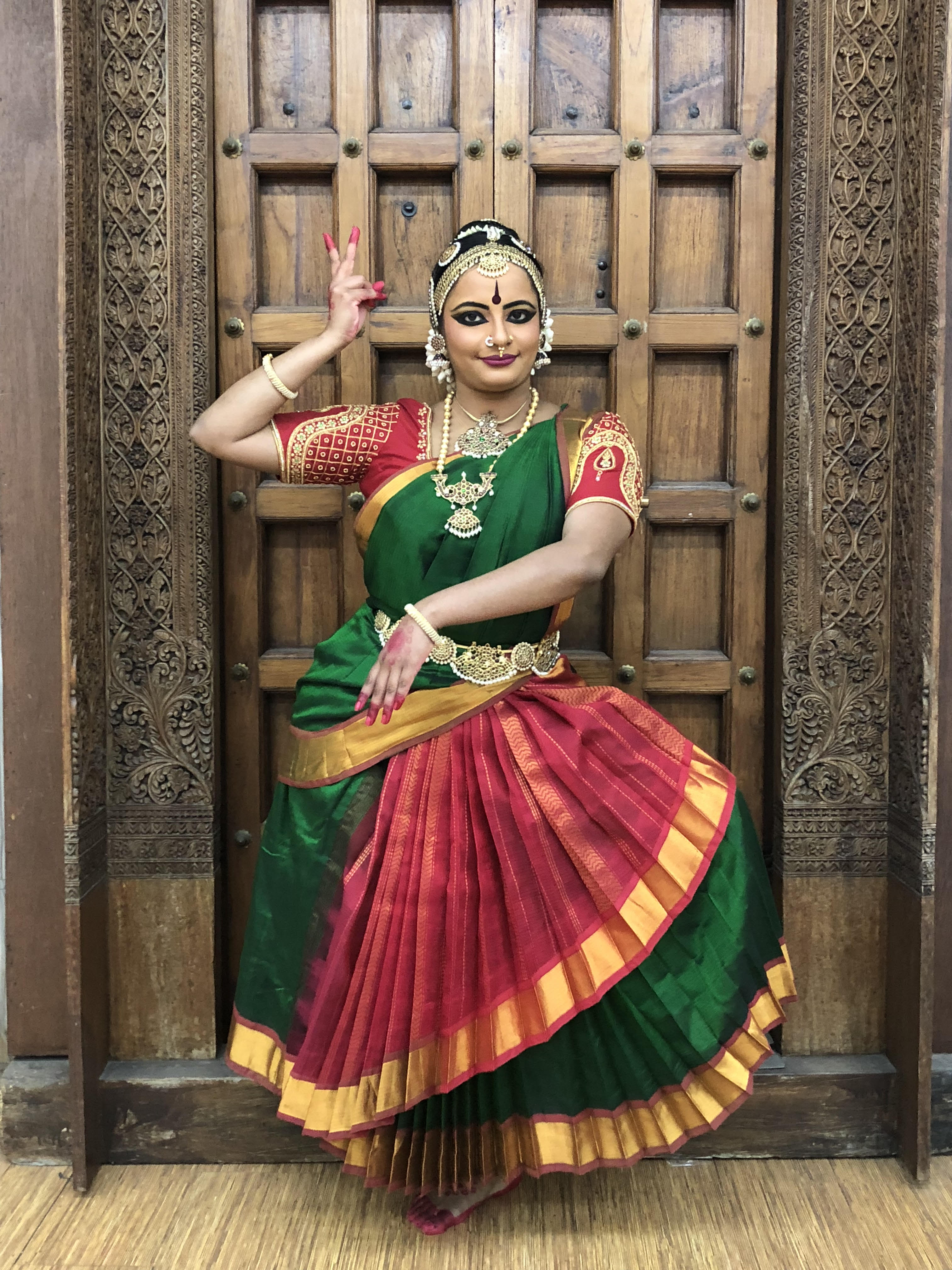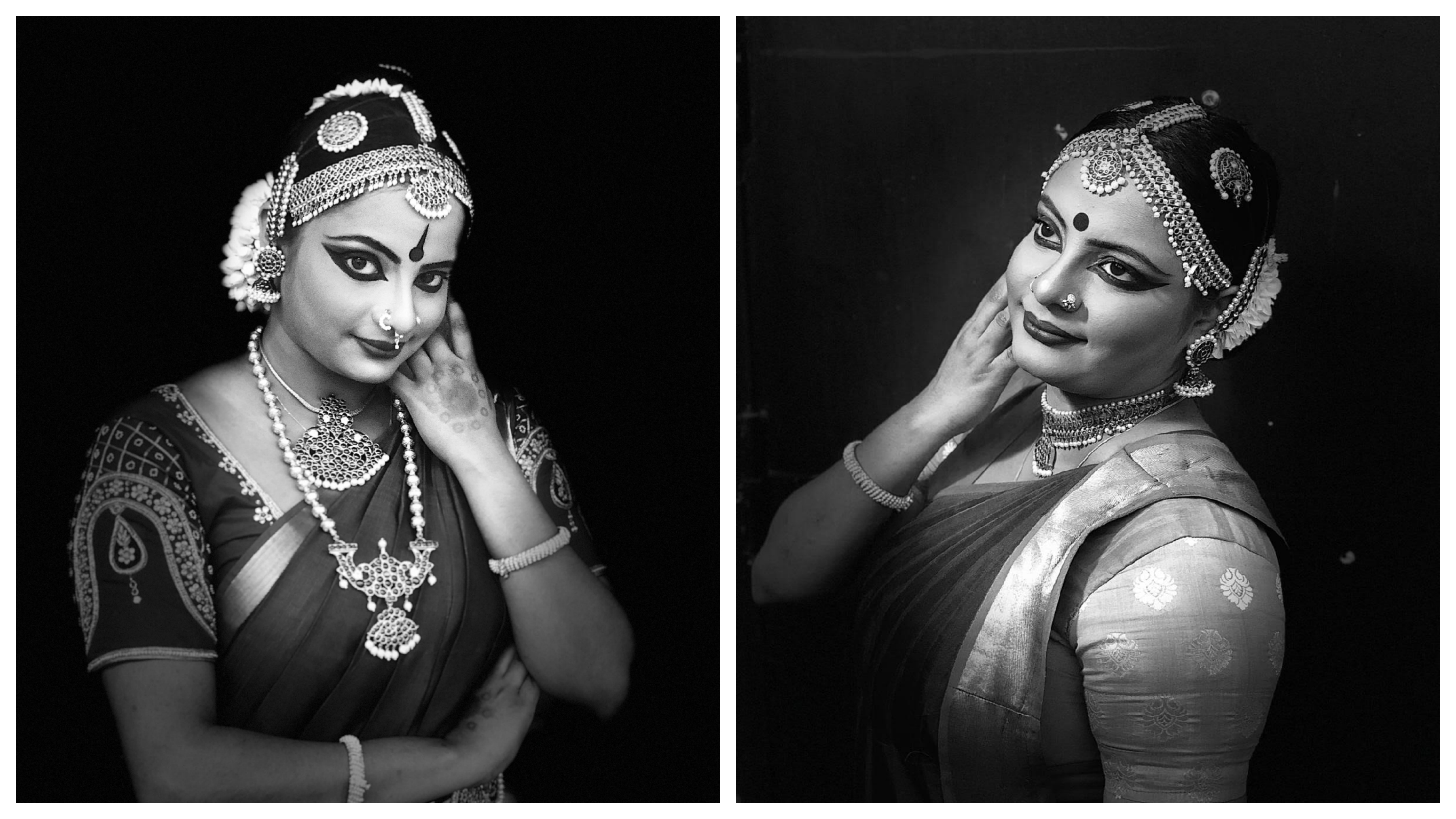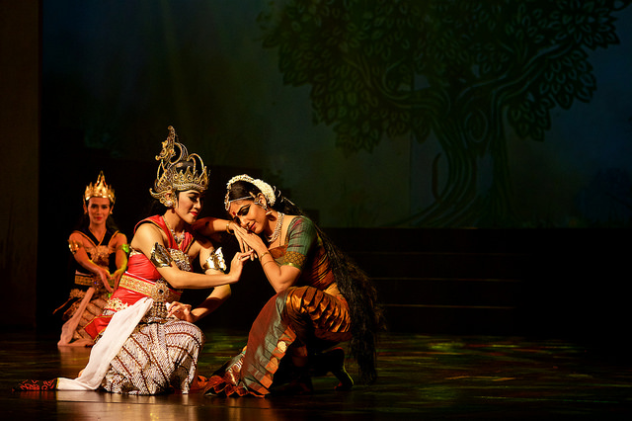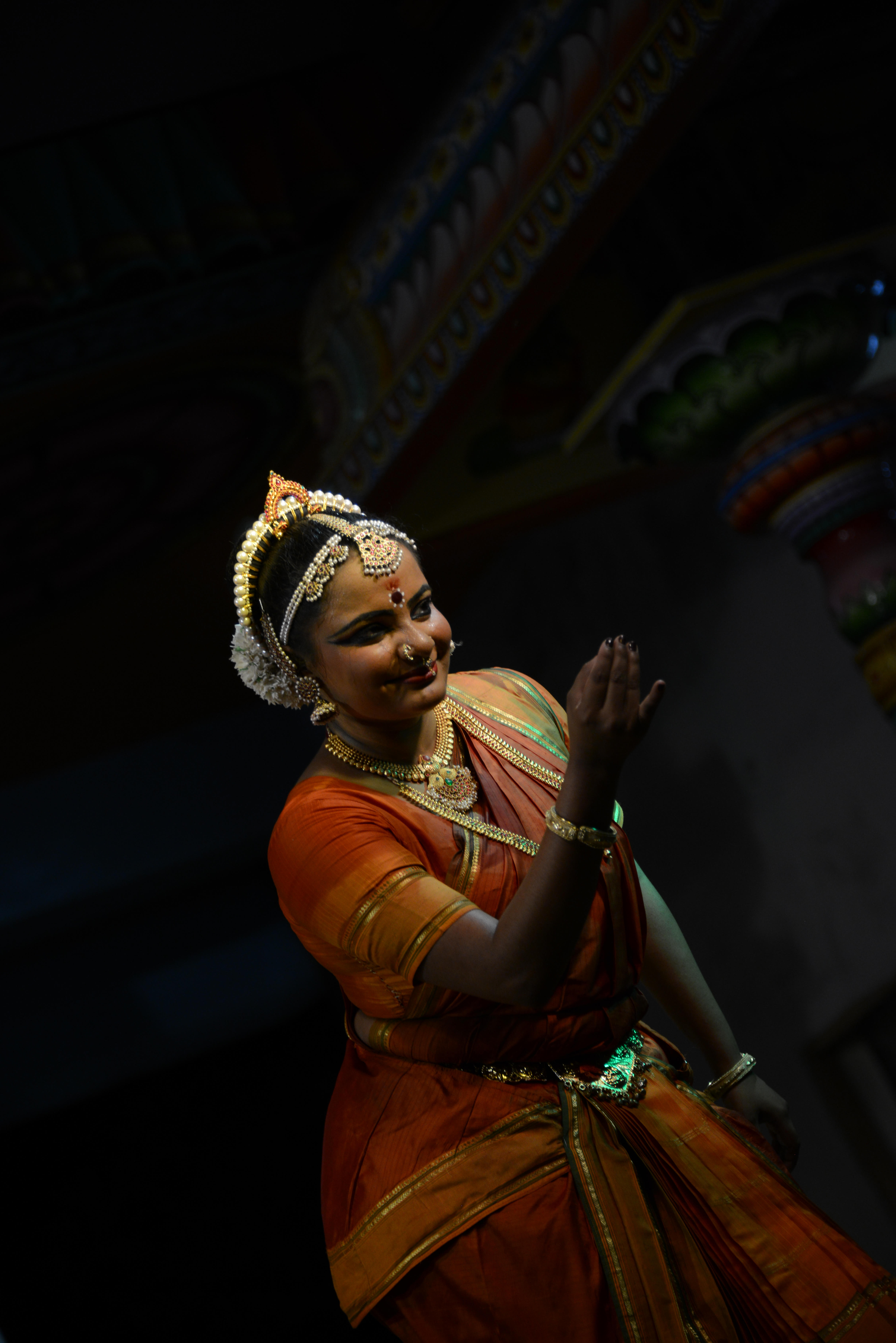Highlighting the richness of Indian culture in Singapore, Apsaras Arts' classical dancer Banupriya Ponnarasu will be performing an explorative Bharatanatyam thematic solo performance – femiNINE- Shades that Personifies Her today.
"The women of the past, present and future have been defined as symbols of solidarity and the backbone of society. They play transient roles from being the nurturer, the giver, the sacrificer, the lover, and the list continues. This begs the question of, has society stopped to ponder on subtle shades of women rather than defining her into convenient moulds?" said Banupriya, highlighting the theme of the performance.
A dance graduate of Apsaras Arts mentored by Singapore’s Indian dance icon Mrs Neila Sathyalingam, Banupriya is now a full-time professional company dancer at Apsaras Arts Dance Company and faculty member at Apsaras Arts Dance Academy. Banupriya completed her Bachelor's Degree in Arts Management at the LaSalle-Goldsmith university and attended a dance teachers training course at Sahrdaya Foundation in Chennai, India. She is currently pursuing her post-graduate training in dance under Mohanapriyan Thavarajah at Apsaras Arts.
She was one of the core dancers in the company's repertoire performance of Anjaneyam – Hanuman’s Ramayana at Kalaa Utsavam last year.
Connected to India (C to I) spoke to Banupriya to find out more about her passion for dance, her work to improve women's rights and how this performance explores the historical traditional roles of women.
C to I: Could you please tell us about how and when you got started with Bharatnatyam?
Banupriya Ponnarasu: I started learning Bharatanatyam since the tender age of 5. My mum enrolled me in classes with the intention of wanting me to learn an art form. What started out with a simple intention has unexpectedly grown into a flaming passion for a lifetime.
C to I: Please tell us a bit about your upcoming solo performance – femiNINE- Shades that Personifies Her. What was your inspiration and how are you hoping your message will be received?
Banupriya Ponnarasu: femiNINE- Shades that Personifies Her was inspired by the many women I have met in my life who strive to do their best in every role they play. Some of them were my; late guru Smt Neila Sathyalingam, my mother, my school teachers, some of my dance mates and general women I have crossed path with through my life. Every woman I have conversed with has intrigued me to ponder on their identity, as their conversation was centred around their roles they play rather than themselves. It is mostly about making the sacrifices against their personal desires. Some of these sacrifices have had a high opportunity cost such as their career, freedom, passion, health and their beauty. Pondering on a women's identity for who she really is rather than what she is in society was the inspiration for this show.
I am hoping for my solo recital to be a reminder to society that women are humans too, and that they are allowed to be themselves instead of suppressing their true identity to feed the roles they play for society. Hence the show celebrates women through the nine emotions of a human being.
C to I: The #metoo movement has picked up steam in recent weeks, with more accusations against athletes, politicians and stars. Please tell us your views on the topic, how you feel the accused should be dealt with and whether you have any plans to support the movement.
Banupriya Ponnarasu: The #metoo movement is paramount to today’s society as there is a need to highlight sexual harassment. I personally call it ‘the closet matter’, as it is an issue that has been prevalent yet kept within closed doors. Many people have lived in fear as they have been either blackmailed or threatened with regards to sexual harassment. The #metoo movement has given people the courage to be able to come out into the light pertaining to the issue. I would like to highlight that the #metoo movement is a pressing issue across all industries. I have hopes for the movement to expand across industries, shedding light on 'closed doors' atrocities currently taking place.
People have varying ideas of bringing justice to the victims affected, hence it how the accused should be dealt with is a subjective one. I personally feel that public humiliation through social media or print media is the worse form of punishment, given that prestige and image are the key traits to survival in the world today.
I have plans to support the movement provided it doesn't shift its focus and lose steam. the movement has highlighted a handful number of people. I hope it doesn't solely fixate itself on merely highlighting perpetrators instead it should move on to the next level of creating a change across all industries. Once a trend has started, it is only natural if the said change occurs.
C to I: How do you see the role and shades of women evolving over the years to the future, and how are you going to portray their change in your show?
Banupriya Ponnarasu: Through the work process of my show, I have understood that women of the past have already been highly celebrated and written about mostly by the patriarchal society. For example, the famous Tamil character Kannagi who stood against the king for wrongfully murdering a husband (an uncanny move for a women in traditional times), to Meenakshi who is married to a powerful man like Shiva but still courageously expresses her nine emotional shades freely on how she feels about him (an extraordinary quality for a married women), to Sita empowering Surpanaka (a prodigious move to empower when the typical quality trait is of a women is to bicker) and lastly to Ganga who embraces the circle of life (to be excepting of all that exists – a idiosyncratic notion in today's context). These characters have been contemporised through the plot of a literary text written in traditional times. The next question is why are we living in contemporary times and still holding onto traditional values. It seems like the patriarchal thought process of how women should be personified has travelled backwards in time instead of moving forward. Hence the show serves as a timely reminder for society to remember to grow in perception instead of stalling.
C to I: You were part of Apsaras Arts' performance of Anjaneyam – Hanuman's Ramayana at Kalaa Utsavam last year. Are you part of the programme this year and what is the event you are looking forward to the most?
Banupriya Ponnarasu: No, I am not part of the programme this year, I am looking forward to Akshayambara – an experimental play uses both modern theatrical tools and the dance drama to create a contemporary narrative that raises questions on female representation and male ownership and Bali by Adishakti Theatre
C to I: In your experience, how has the Indian classical dance circuit changed in Singapore over the years? Has it evolved? Become more popular?
Banupriya Ponnarasu: The Indian classical dance circuit has changed tremendously over the years. Today the supply is more than the demand. this is where there are more shows and festivals in one calendar year, but insufficient audiences. Given that the Indian community in small and the Indian art community is even smaller than that, shows that works presented reach out to a limited audience base.
Although the industry has evolved through the changing times in Singapore, it has yet to mature in terms of placing itself against other forms in Singapore such as literary arts, visual arts, contemporary arts and other traditional art forms.
C to I: Where do you feel classical dance such as Bharatanatyam fits in today's world of online streaming, social media and entertainment cycles? Do you have any idea how to keep up the popularity of Bharatanatyam among the public moving forward?
Banupriya Ponnarasu: Bharatanatyam has already started paving its way into online streaming, social media and entertainment cycles. This is thanks to the many young and upcoming dancers around the world who propagate Bharatanatyam creatively through social media platforms and they make them relevant through their posts, insta stories, snap chat, etc. Bharatanatyam, an ancient form has travelled through the different eras and lived through the changing times, thanks to our predecessors who tirelessly propagated the form. It is now in the hands of the young and upcoming dancers to carry the baton.
The popularity of Bharatanatyam lies in the number of 'neo-traditionalists' who exist. I'd like to use the term 'neo-traditionalist' here, as I defined it to be a group of people who use the traditional medium of an art form to express contemporary themes without diluting its essence. I believe that this is how to keep up the popularity of Bharatanatyam in today's times, where it is about making it relevant to the public amidst a sea of art forms in the world today. I have been fortunate to have been surrounded and working with a group of 'neo-traditionalist' at Apsaras Arts Ltd, where I have been part of productions which reaches out to the public. One of the notable works was; Agathi – the plight of a refugee.






